KTH researchers predict an exciting 2014
New year, new scientific discoveries. The overarching goal of KTH's development plan is to create a brighter future. But how do researchers make this a reality in their day-to-day work? We asked eight of KTH's researchers about what they hope to achieve over the next year.
Jakob Kuttenkeuler, Aeronautical and Vehicle Engineering
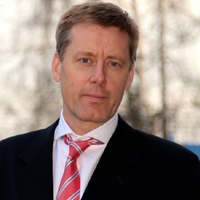
"2014 is going to be fantastic. Myself and my colleagues in Naval Architecture are in the middle of an exciting process. Together with research groups involved in robotics and control engineering we are establishing a cross-disciplinary collaboration in order to ramp up KTH's research in underwater engineering. The research will focus on autonomous underwater vehicles for environmental monitoring and also perhaps the collection of samples."
"The goal is to contribute to the environmental work taking place in the Baltic with small, durable, robust and cheap vehicles that will operate in synchronised clusters, delivering measurement data to base-stations on land. There are many challenges involved. Examples of our main focuses are navigation based on terrain recognition and autonomous docking that involves the vehicles finding the charging stations in order to replenish their energy stores."
Gunnar Karlsson, Communication Networks
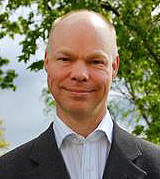
"I have realised that little of what I did in 2013 was what I had actually planned to do. Instead, I have participated in debates about the radio and television license, about online education and about the university. All of these contributions are available on my KTH website. I now hope that 2014 will give me a second chance."
"I have been researching communication between mobiles, without networks, for a long time. Now I want to put this to use! An app will chart how people move about in a built environment. This is not for tracking individuals, but to see the flows and how well-suited the environment and the transport system is to the people. The next app will provide lighting effects at concerts where the screens of the mobiles will be synchronised in interesting patterns; from the northern lights to white noise. And I want to help people in places where networks are censored or unavailable, as a support for rescue operations and democratisation."
Rakel Wreland Lindström, Applied Electrochemistry
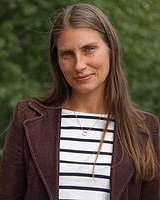
"I will probably not be able to meet Obama again, who I had the privilege to talk with about fuel cells when he visited KTH in September. But I hope that both our research area and KTH as an educational and research institute will be able to reap the benefits of hullabaloo surrounding the visit. We have noticed an increased interest in fuel cells and have been able to talk about what we do for people far outside of KTH; everything from school classes and business leaders to statesmen. Hopefully, Obama's visit opened people's eyes to the fact that what we are doing at KTH is important, relevant and fun!"
"In 2014 we will begin a new project to investigate newly-developed polymer electrolytes and catalysts free of precious metals in polymer fuel cells. The goal is to develop a fuel cell concept that is competitive, when it comes to both price and sustainability for the fuel cell cars of the future."
Jonas Eliasson, Centre for Transport Studies
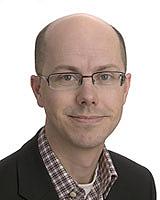
"The largest project we are involved in is the expansion of the Stockholm Metro system and the proposals for changing the congestion charges in Stockholm and Gothenburg. These investigations will hopefully be concluded in 2014. I also look forward to the follow-up of the City of Stockholm's accessibility strategy, which involves prioritising buses and bicycles ahead of, for example, parked cars – a good idea which will be interesting to keep track of."
"Another area of research is concerned with infrastructure investments, which usually end up more expensive than planned. In 2014 we will conduct several projects investigating what the cause of this is and what can be done to combat this. Finally, I hope that we can contribute to a better process for railway infrastructure capacity allocation, in other words which trains will be prioritised when all of the operators' requests cannot be accommodated on the same track – this is key to the efficiency and attractiveness of the railways."
Jonas Strandberg, Particle and Astroparticle Physics

"Because I work in particle physics and was involved in the discovery of the Higgs boson, which laid the foundations for this year's Nobel Prize, I do not expect 2014 to be as eventful as the past year. Right now, we are upgrading the accelerator and detectors at CERN; therefore, we will receive no new data over the course of next year."
"Over the course of the forthcoming year, we will instead compile a 'paper' on the Higgs boson containing the final analysis of the data we already have and also prepare ourselves for the accelerator being restarted in the spring of 2015. As we will then be extracting data at a much higher energy level than before, there will be many exciting challenges involved in optimising the analysis in order to achieve the best performance."
Åsa Moberg, Sustainable Development, Environmental Science and Engineering
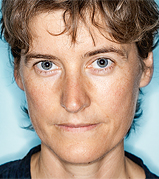
"I continue to be involved with interdisciplinary research into the 'ICT for Sustainability' field in close collaboration with businesses and other societal stakeholders. It is fun! The pictures of how ICT (Information and Communications Technology) will look in society in future that we are developing and the analyses of the consequences of these future scenarios may have for the environment and society will hopefully have a huge impact. The results will contribute to better informed decision-making and conscious choices by politicians, businesses and individuals."
"Our research in the CESC (Centre for Sustainable Communications) contributes to the sustainable development potential of ICT being utilised in the best possible way. In 2014 our research will attract more attention in society, among decision-makers and individuals, both in Sweden and internationally. A highlight will be the ICT4S conference in August, which I am involved in organising through the CESC."
Mikael Östling, Devices and Circuits
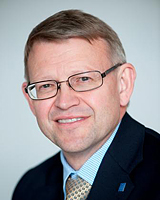
"There are lots of new, exciting projects that we will begin in 2014. I'm really looking forward to our new KAW project 'Working on Venus', which involves developing new integrated circuits for very high temperatures. I also have a new VR project that involves graphene used as a photo-detector in a new solutions for cost-effective high-speed electronics. We have invested in a new metal deposition system that will be installed in January and provides us and KTH with a completely new opportunity for nanofabrication."
"In April we are hosting an international conference focussing on nanoelectronics which is exciting and important for KTH's international profile. I am also looking forward to three doctoral theses that will be completed over the course of the first half of the year."
Nina Cyrén Wormbs, Division of History of Science, Technology and Environment
"I mainly hope that I will actually get the time to do some research next year! There are mainly two projects that I am looking forward to getting into in more depth. The first is my VR project which concerns remote sensing and images of the world. There are several of us involved in this project, including a doctoral student, and it will be exciting to be able to work more closely together."
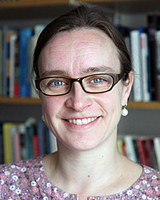
"The other is a pair of more limited research papers that are part of a larger project financed by Mistra. One of the articles investigates how scientific 'assessments' of, for example, the climate in the Arctic, also makes statements about issues that are more relevant to the social sciences or humanities such as how society will adapt as a result of changes. Both are important puzzle pieces in a broader understanding of the changing environment."
Survey: Jill Klackenberg and Christer Gummeson

